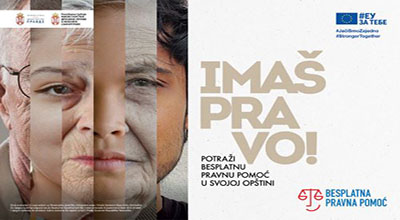Одељење за општу управу
Одсек за месне заједнице
Канцеларија 38
Контакт: 011/244-9729
1.МЗ „БАЊИЦА“– Булевар Ослобођења 96, тел:011/3983-790,
е-маил: banjicamz@gmail.com
Председник: Миодраг Стојановић
2.МЗ „ГОРЊИ ВОЖДОВАЦ“ – Војводе Степе 89, тел: 065/8708-708
е-маил: gornji.vozdovac@gmail.com
Председник: Никола Максимовић
3.МЗ „ЧИНОВНИЧКА КОЛОНИЈА“– Јове Илића 89, тел:011/2469-844,
е-маил: mz.cinovnickakolonija@gmail.com
Председник: Весна Ристић
4.МЗ „ДОЊИ ВОЖДОВАЦ“– Војводе Степе 89, тел:060/555-2714
е-маил: mzdonjivozdovac@hotmail.com
Председник: Тешман Стојановић
5.МЗ „АУТОКОМАНДА“ – Лимска 15, тел: 011/3912-394,
е-маил: mz1autokomanda@gmail.com
Председник: Јулијана Петровић
6.МЗ „ТЕШИЋА КУПАТИЛО“ – Раде Кончара 1, тел: 011/6437-127,
е-маил: mztesicakupatilo@gmail.com
Председник: Милијана Барзиловић
7.МЗ „ПАШИНО БРДО“– Мијачка 5, тел: 011/2850-155
Председник: Звездана Микетић
8.МЗ „ВИНОГРАДИ“ – Ђорђа Кратовца 50, тел: 011/244-9931,
е-маил: mz1vinogradi@gmail.com
Председник: Милица Станимировић
9.МЗ „ШУМИЦЕ“ – Устаничка 125ц, тел: 011/2891-732,
е-маил: mzsumice@gmail.com
Председник:Драгица Маринковић
10.МЗ „ДУШАНОВАЦ“ – Озренска 39, тел: 011/3860-097,
е-маил: mesnazajednicadusanovac@gmail.com
Председник: Зорица Јанковић
11. МЗ „МИЛОРАД МЕДАКОВИЋ“ – М. Умљеновића 18, тел: 011/6705-648,
е-маил: mzmiloradmedakovic@gmail.com
Председник: Витомир Деспотовић
12.МЗ „МИЛУНКА САВИЋ“ – Ванђела Томе 5, тел: 011/3982-835,
е-маил: savicmilunkamz@gmail.com
Председник: Славко Станојевић
13.МЗ „БРАЋЕ ЈЕРКОВИЋ“ – Мештровићева 34, тел: 011/2494-819,
е-маил: mesnazajednicabracejerkovicteh
Председник: Александра Имширагић
14.МЗ „МИТРОВО БРДО“ – Заплањска 86, тел: 011/2473-849,
е-маил: mzmitrovobrdo1@gmail.com
Председник: Снежана Алексић
15.МЗ „КУМОДРАЖ“ – Војводе Степе 571, тел: 011/3945-626,
е-маил: mzkumodraz@gmail.com
Председник: Дејан Бабић
16.МЗ „ЈАЈИНЦИ“ – Булевар ЈНА 86,тел: 011/3940-506,
е-маил: mzjajinci@gmail.com
Председник: Јасмина Џунић
17.МЗ „РАКОВИЦА СЕЛО“ – Булевар ЈНА 30, тел: 011/3940-335,
е-маил: mzrakovicaselo@gmail.com
Председник: Зоран Милошевић
18.МЗ „БЕЛИ ПОТОК“ – Васе Чарапића 53, тел: 011/630-6601,
е-маил: mzbelipotok@gmail.com
Председник: Драган Илић
19.МЗ „ПИНОСАВА“ – Трећа Нова 37a, тел: 011/3906-298,
е-маил: pinosava.mz@gmail.com
Председник: Ивица Илић
20.МЗ „ЗУЦЕ“ – 14 Нова 5а,тел: 011/8052-362,
е-маил: zucemz@gmail.com
Председник: Миодраг Николић
21.МЗ „РИПАЊ“ – Ерчанска 10, тел: 011/8650-598,
е-маил: mesnazajednicaripanj@gmail.com
Председник: Миодраг Мировић
22.МЗ „КУМОДРАЖ 2“ – Кумодрашка 376, тел: 011/2473-245,
е-маил: 12mzkumodraz2@gmail.com
Председник: Снежана Глушац
23.МЗ „КУМОДРАЖ 1“ – Стара 1,тел: 011/3945-433,
е-маил: 23mzkumodraz1@gmail.com
Председник: Славко Радак
24.МЗ „МЕДАКОВИЋ 3“ – Боривоја Стевановића 41, тел: 011/6888-211,
е-маил: mzmedakovic@gmail.com
Председник:Срђан Милић
25. МЗ „СТЕПА СТЕПАНОВИЋ“ – Генерала Љ. Милића 7, тел: 011/6700-555
е-маил: mzstepastepanovic@gmail.com
Председник: Славица Сантрач
СПИСАК УЛИЦА ПО МЕСНИМ ЗАЈЕДНИЦАМА ГО ВОЖДОВАЦ ПРЕУЗМИТЕ ОВДЕ.




